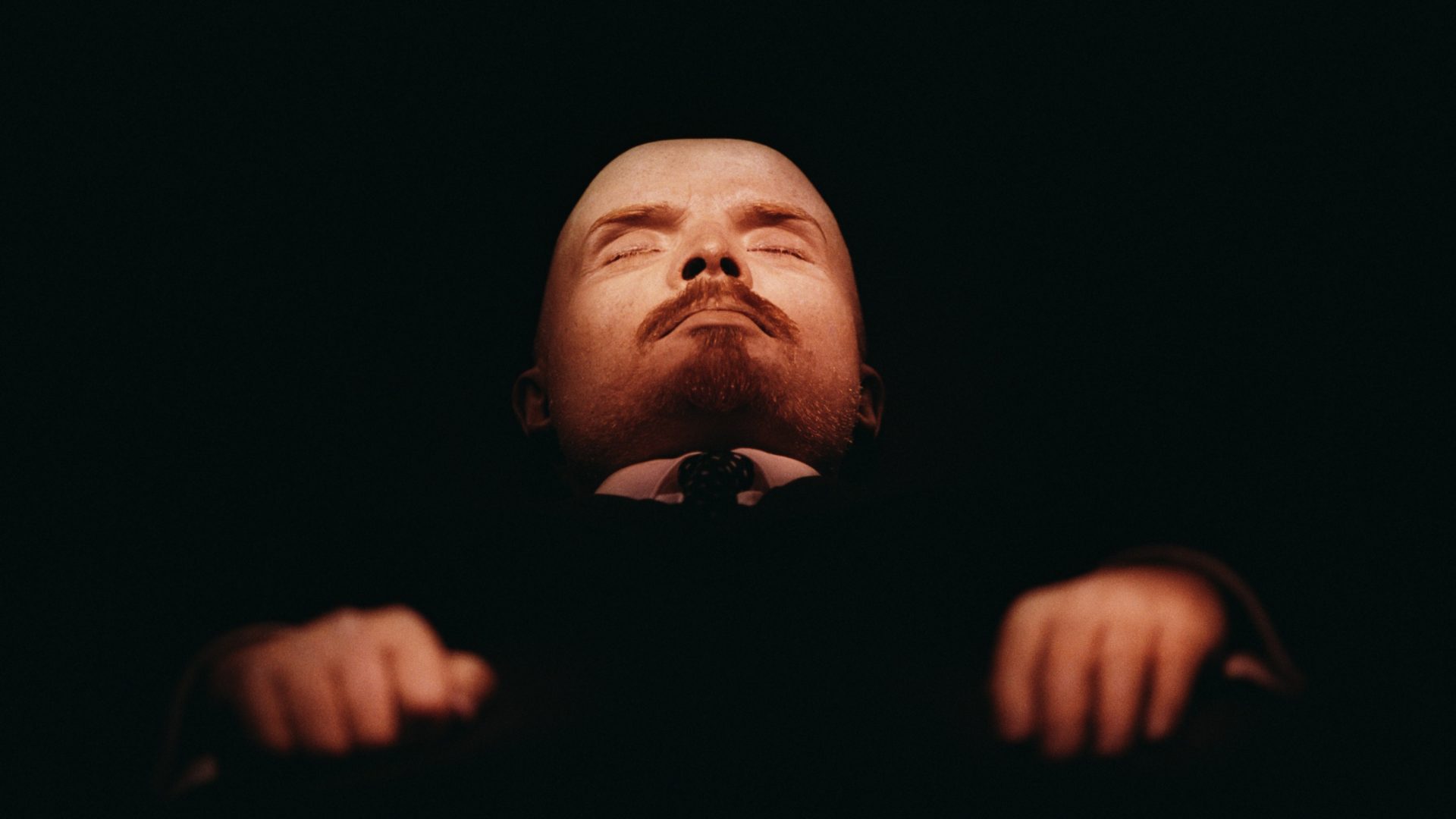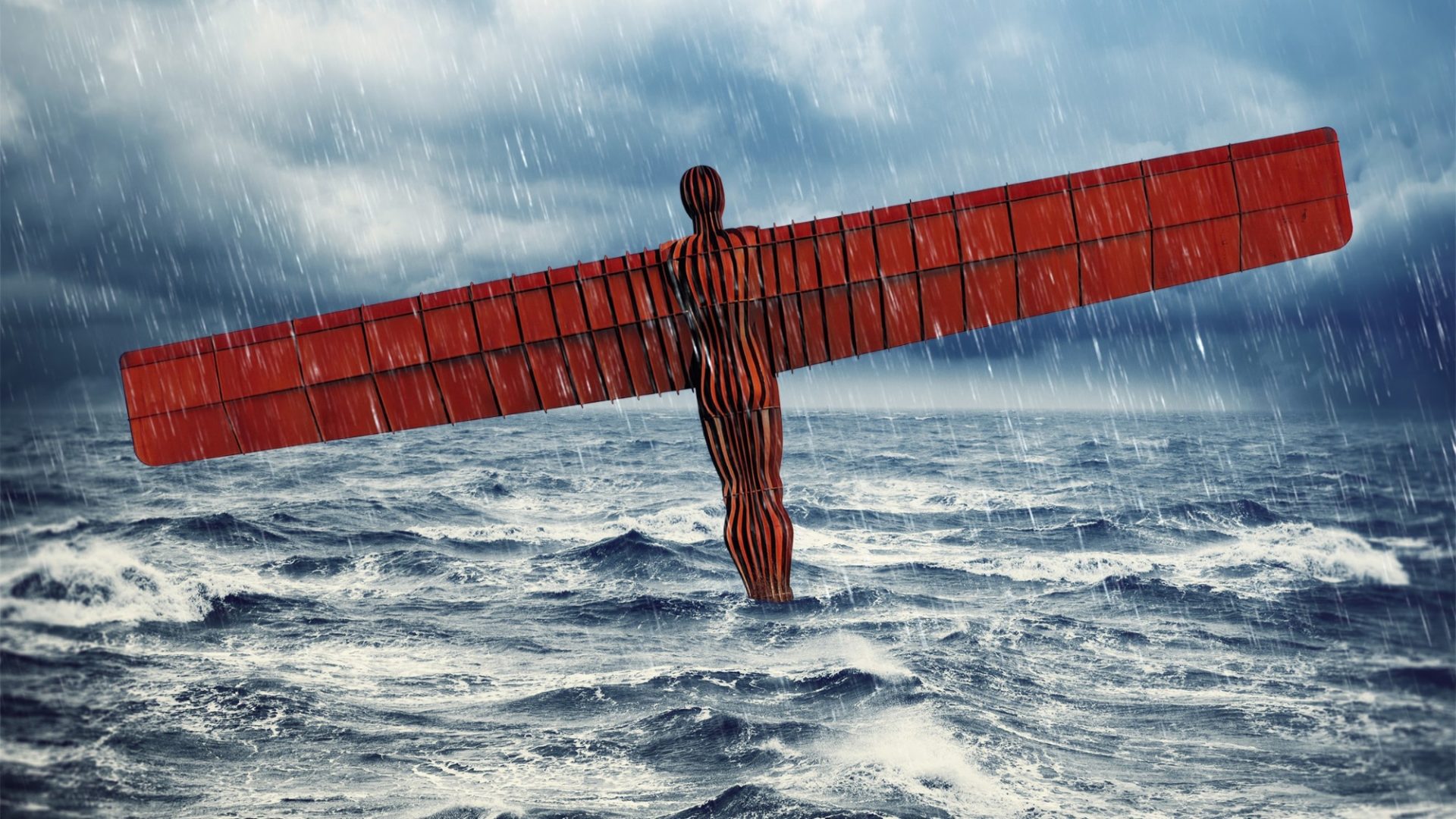A fiery, unpleasant and irascible man who would fly into a rage if the pencils were not arranged correctly on his desk, it is perhaps no surprise that Lenin didn’t live long.
He was intensely intolerant of any dissent, vicious in argument and dedicated to the ideas of Marx with all the fervour of a religious zealot. The former Vladimir Ilyich Ulyanov overthrew the Russian political order, established the Red Terror in which tens of thousands of his political opponents were murdered, absorbed huge swathes of eastern Europe into the new Soviet empire, personally oversaw the creation and expansion of the Gulag, and was dead by 53. His form of revolutionary Bolshevism shaped the 20th century. We are still living with the consequences.
But by 1921, Lenin himself was burnt out, his health in sharp decline. The years of frenzied revolutionary activity had left him suffering from insomnia and acute headaches. He went to his house in Gorky, outside Moscow, to be cared for by his family, but the symptoms became so bad that he considered killing himself. He underwent surgery, which didn’t help.
Lenin worked on through his decline, still finding time to have his opponents arrested and imprisoned. He also continued his feud with Stalin, whom he regarded as “crude” and unsuitable for high office. Their relationship was made worse when, during a phone call, Stalin shouted insultingly at Lenin’s wife, Nadezhda Krupska. Lenin was insistent that Stalin should not succeed him and that his successor should be Leon Trotsky.
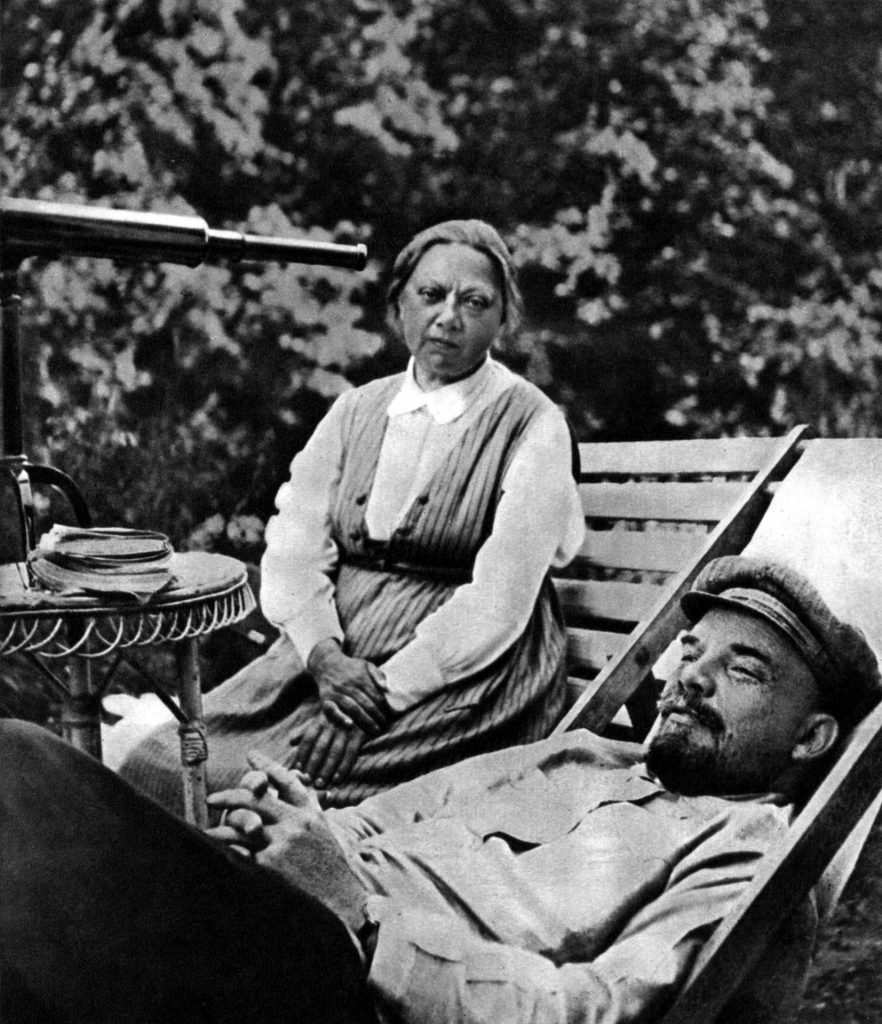
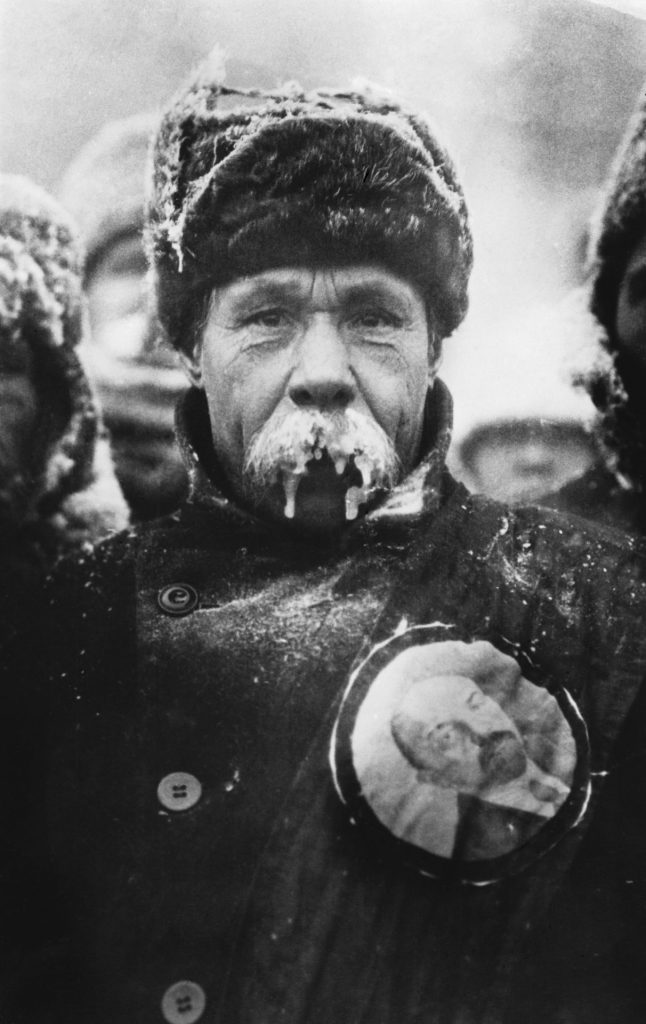
workers’
representative at the funeral. Photo: Hulton-Deutsch
Collection/Corbis
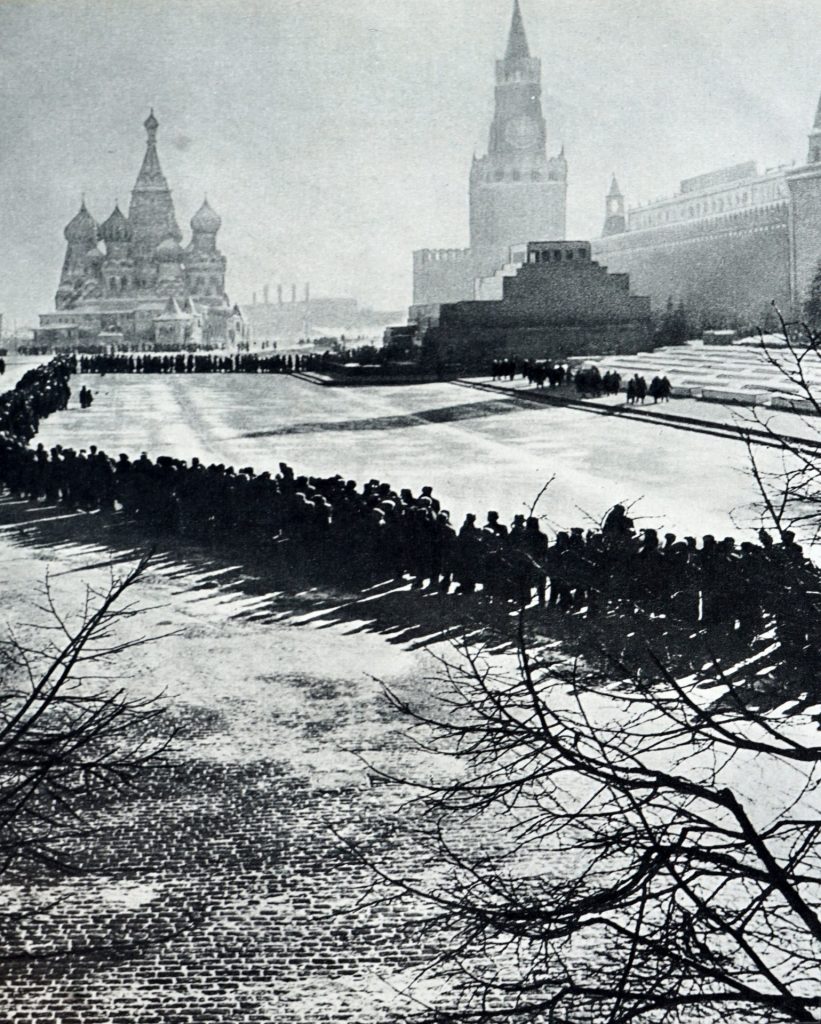
But a series of further strokes meant that by 1923 Lenin was unable to speak, or even write. Even so, in December he was elected as government chairman of the newly created Soviet Union, and the authorities released hopeful statements that his health was improving, noting that he had recently been out hunting rabbits. But it was not so. Lenin died on January 24, 1924.
A government statement said: “This most painful blow, which has overtaken the workers of the Soviet Union since the time of the conquest of power by the workers and peasants of Russia, will be a profound shock to every workman and peasant, not only in our Republic but in every country.”
Lenin’s body was conveyed to Moscow by train, where it was put on display for three days at the House of Trade Unions. A million people went to pay their respects. The body was dressed in khaki, and watched over by Felix Dzerzhinsky, the head of the Cheka, Lenin’s murderous secret police. Lenin’s wife was also present and as she approached the body, a huge crowd of bearded men, dressed in working clothes and sheepskin coats, watched in reverent silence.
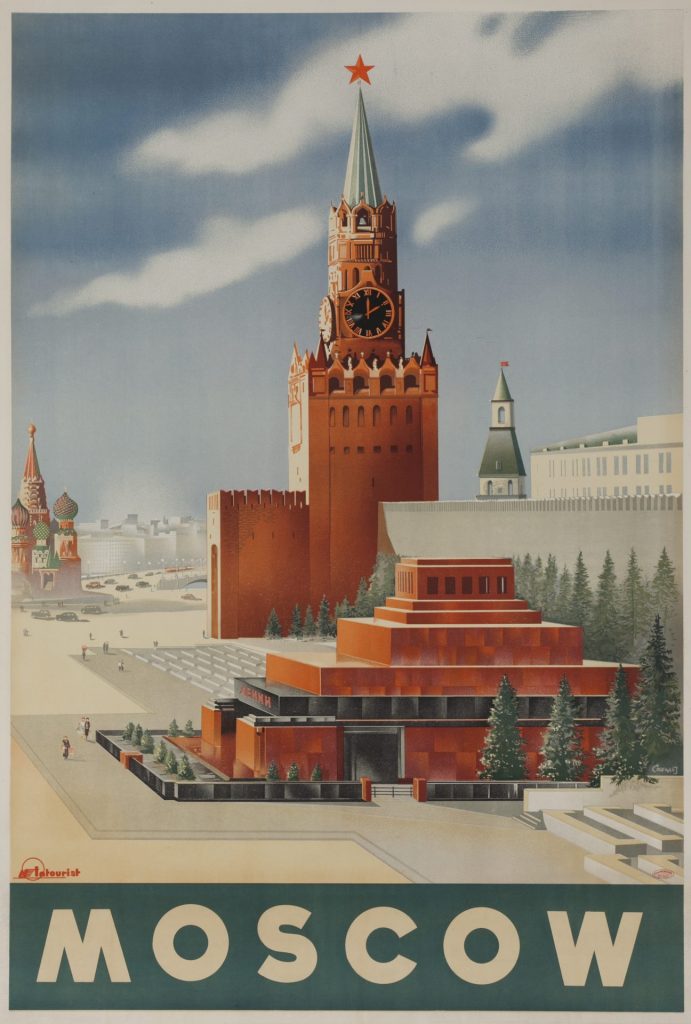
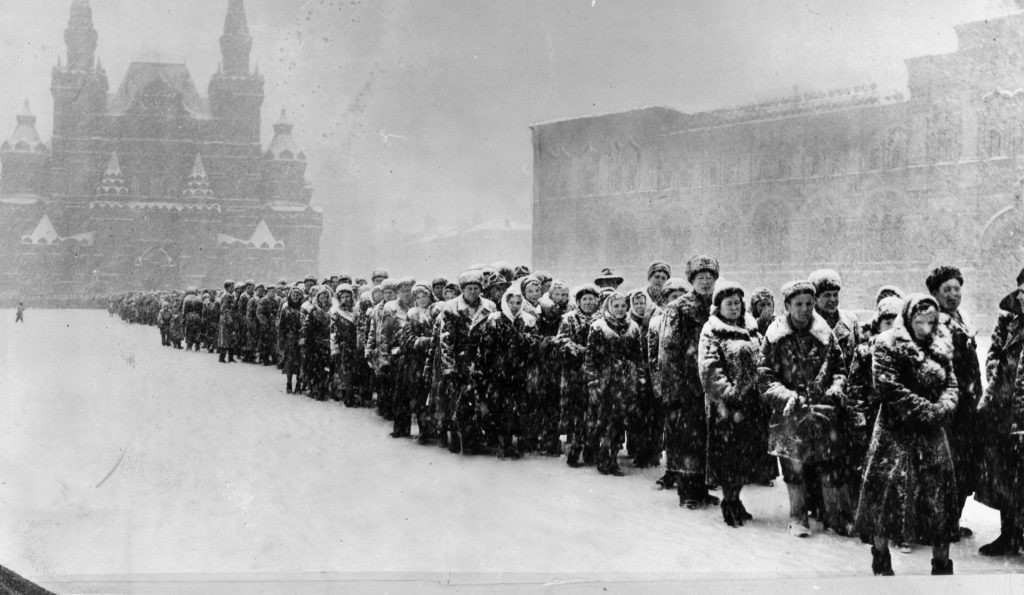
There were speeches by senior figures including Stalin, who was said to be secretly jubilant at Lenin’s death. One notable absence was Trotsky, who remained in the Caucasus – Stalin had purposely given him the wrong date for the funeral to keep him away. Trotsky would later be murdered in 1940 in Mexico City, on Stalin’s orders.
After the speeches the music played and the soldiers stood to attention. The writer Arthur Ransome, who attended the event, commented: “I had a curious feeling that I was present at the founding of a new religion”.
The body was then taken to Red Square, where it was displayed in fittingly harsh weather – Pathé reported that the temperature went down to -35C. The weather was so bad that mourners were instructed not to bring their children. A procession of the Bolshevik faithful went past in the snow, holding banners which they lowered as they passed the coffin.
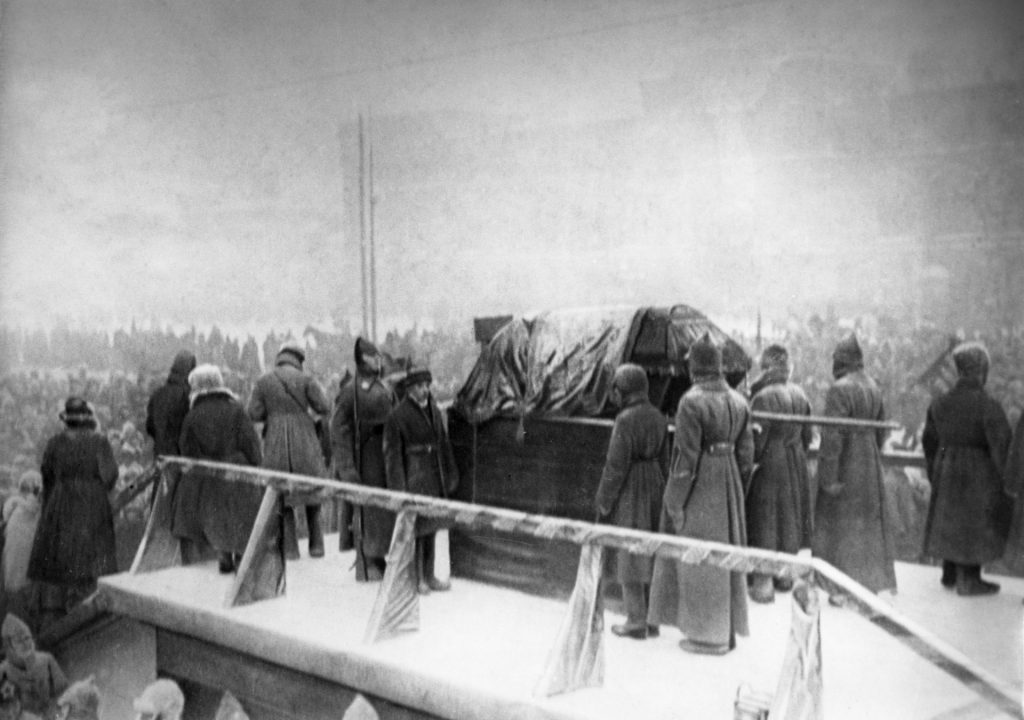
politburo carry the
casket. Photo: Sovfoto/Universal
Images
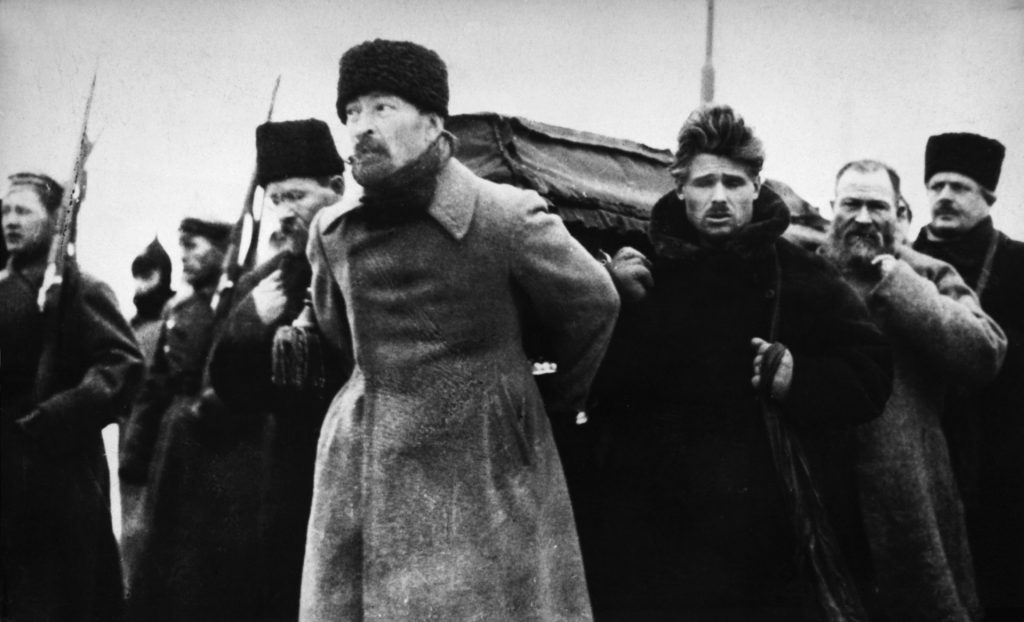
Corbis/Getty
The cold was so intense that some of the mourners ran past in an attempt to keep warm. One military commander was so badly frostbitten he lost his nose and cheeks. Afterwards, the body was placed in a wooden mausoleum on Red Square. An elaborate stone mausoleum replaced that in 1930.
Lenin was the creator of the first totalitarian state and he oversaw the state-sanctioned mass murder of those he regarded as politically undesirable. His body is still on display in Moscow today, an object of veneration in Vladimir Putin’s Russia.

